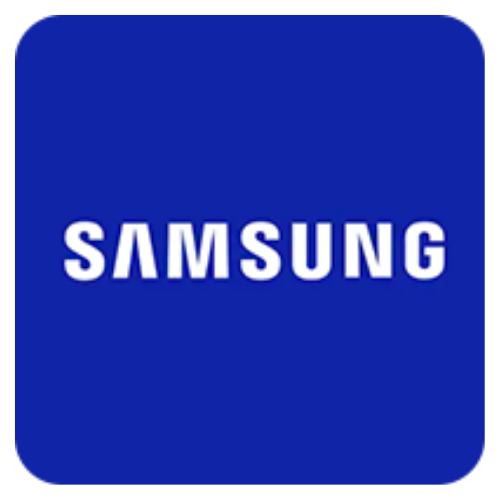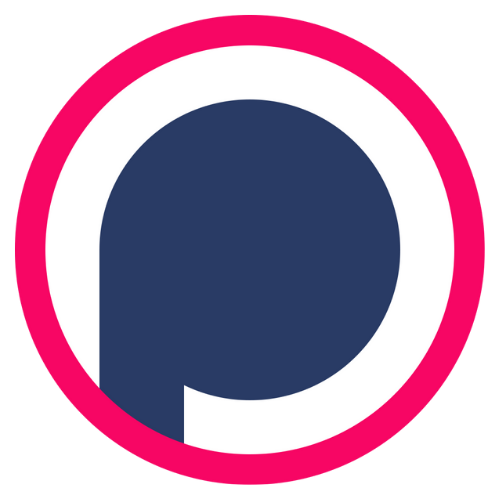Laura Beth: Alright thank you Lydia and Rachel for being with me today. I am so excited to have this conversation with you. But before we really dive into the questions that we want to cover today, I’d love it if we just took a few minutes to learn more about you and what you do at Infinit-I. So Lydia, let’s start with you.
Lydia: Yeah, and thank you for having us. We always love getting to get out and talk about what we do, and what we do is just a small piece of the greater trucking world. So it’s always fun to take a break and talk with great partners about this. I’m Lydia. I’m obviously with Infinit-I and this is my family’s business. I’ve grown up around it since I was knee high to a grasshopper, some say. I’m in the marketing arm right now, but I’ve just been dotting around all of the different divisions as we continue to structure for growth and make sure that we’re offering everything we need to our clients because really for us it’s about finding success for them and that started 25 years ago, it started with recruiting and then transitioned into online training and who knows where we’ll go next, but certainly a lot of fun. Rachel, of course, has been at the company for a couple of years. Rachel, tell us about your background.
Rachel: Absolutely. So I’m Rachel and I came on in June of 2022. I started out as a client success representative. We say client success because we believe that the client is truly valued. We are not a ticket system. We believe in hand holding our clients and really helping be a part of that culture of safety and putting that in with the company and we believe that humanizing their approach of online technology is how we do that and really, creating friendships with the safety directors and helping where we can so that’s what I did from June until October, and October, I started out as a strategic partnership representative. I build and maintain relationships with insurance companies that validate what we do is a really great tool to clients to implement behavior changes within a company and they started that out, it was an organic evolution actually of the insurance company started reaching out to Infinit-I saying what do you do we’re interested because we keep going with our clients and Infinit-I keeps coming up and the behavior changes are we’re noticing a trend of better CSA scores, a decrease in claims and that’s how this role came to be. I partnered with insurance companies that validate what we do like Canal. They’re a really great partner of ours.
Laura Beth: Thank you so much. I love to have you share those introductions because you guys hit on two things that I think make this partnership significant. And first I think, Lydia, the family business aspect of that, as Canal being a family-owned business, we certainly have that in common, and I think it’s a pretty special place to work in an environment to get to work in. And then Rachel you talking about the relationships and the connections, we very much at Canal believe that this insurance, it’s a relationship business and the ability to really connect with our customers and impact the way that they’re able to do their jobs and be successful in their industry is something I think that we also have in common that makes the partnership really work for both of us. So thank you so much for providing that to us and being here today again, we’re gonna start off with just Lydia if you’ll give us a brief overview of Trucking 52: how it started, how it’s working today, and how it is providing training to the commercial truck industry.
Lydia: Yeah, so, we were founded 25 years ago, and like I said early on we were actually in online recruiting. We were essentially an early Craigslist, and what a good time to start an online business 1999 right before the whole bust, but we rode through it and we were essentially a Craigslist for finding truck drivers and that was so successful and also showed us the other side of the recruiting problem, which of course is retention. How do you stop the turn and keep good drivers who are actually committed to your company and who are of course gonna be safe out on the road. We naturally found our way into training that way. We were one of the earliest online training platforms for transportation and long story long for us, we’re more than a platform right? You can find an online training tool anywhere. If you’re a box checker, you don’t have a big budget, there are lots of options out there. But for us like you said, we’re a family business. We are people first. We care about thinking about a common sense approach to everything. So when we got into online training, of course common sense first, we’re asking ourselves these questions. Why do people leave their job? Because they didn’t connect with their company culture, because they weren’t adequately equipped to do their job, or sometimes because the company didn’t meet the promises that they made to the employee about pay or home time or whatever. And of course we can’t do anything about those kinds of promises, but online training tools are really effective at allowing for communication from management to employees across departments in addition to just the base function of training. And of course that online training is a way, as I said, to adequately equip employees to do their job. Nobody shows up at their job and says, I don’t want to do this well, or very rarely today right, most human beings want to show up, they want to do a good job, they want to be given the tools that they need to be successful. So that’s truly the way this all started was: how can we as a company provide that to an industry that we already know and love? And so we built an online training platform. Over the years we’ve served companies large and small. But of course if you look at all of the studies out there, the industry a whole is, what is it? 95-97% small fleets, ten or fewer trucks. So while we love having clients who are larger clients and we have really advanced training platforms for those clients. Most companies, we just want them to start thinking about safety and start doing something that’s consistent and ongoing because if you aren’t thinking about safety consistently, then you’re not going to see the results you really want. And so Trucking 52 is kind of that meat and potatoes version of online training that really gives you the tools you need to start setting up a consistent program, the catalog along with it is a really focused catalog. It’s 52 or so pieces of content and it’s the most used, most requested, most important according to some of our partners’ content that companies really need to use to see improvement in CSA scores, reduction of accidents and violations, things like that, and really just stay safe on the road. It’s been a long journey to where we are today and really fun to have something available for every truck out on the road, not just the big guys.
Laura Beth: Talk to me Lydia about the content that’s from Trucking 52. Where do you guys get that content from?
Lydia: We have an in-house team, thank goodness. It is so much fun. When you have an in-house team because you can move quickly and we love to be nimble. So yeah, we have an in-house team of young and creative enthusiastic people who write, script, research, and then produce our videos. And again common sense for us the most important thing to any training program in person online doesn’t matter is participation. If people don’t use it, then it’s not gonna work for you. So we from day one have taken the approach of microlearning before it was even a term, before MIT did the study to say that microlearning videos or training sessions six minutes in length are best for conversation and retention, we decided hey that’s common sense. People don’t have the attention span, especially nowadays with everything going on and computers in our pockets. Attention spans are really short. And of course at the end of the day trucking companies need their drivers back on the road delivering loads. So our video production team keeps all of the training content short, to the point, and, honestly, also just treats drivers like the professionals they are. A lot of them are tenured in this business and they know how to back a rig, so it’s not always about teaching somebody something they didn’t know. It’s more about reinforcing information that they already know and just need to be reminded of, because we all get a little complacent sometimes, myself included. And so the in-house team, they do a great job and we produce new content every month. So we’re constantly adding to the catalog, reviewing what’s there, and staying up to date, and it can be really fun now they are even getting into doing some tongue and cheek, not quite parody videos, but little releases here and there just to stretch those creative muscles, which is great.
Laura Beth: That’s awesome. I love the microlearning that you guys like, we were doing that for such a long time before, that is so the way. Especially from the employment side of things, we’ve transitioned our annual employee trainings into microlearning, and it’s definitely a more effective way to communicate and meet people where they are, and I think that’s especially true with people in commercial trucking that are on the road, and may be able to consume the information on their phone while they’re waiting for a load or taking their break. It meets people where they are, I think, which is incredibly helpful.
Lydia: Yeah detention time now, it’s such a tough thing. And so this is at least something that can be knocked out when you’re forced to sit and wait.
Laura Beth: I mean I love being efficient. And I think commercial truck drivers sometimes are the most efficient folks because there’s so many aspects of commercial trucking that need to be managed to have it be a profitable business. And so I think that’s probably an aspect of the training that really resonates with that particular group of professionals. Rachel, can you talk to me about some success stories that you’ve had with companies that have had really positive experience implementing the Trucking 52 program?
Rachel: Yes, absolutely. This is actually probably one of my favorite success stories because it kind of has me involved. My role as a client success representative plays a little bit of a part in this, so whenever I left client success, I had worked with several companies. You build a relationship with them, you know them by name and whenever I came on to this new role as a strategic partnership representative I was now working with insurance agents and producers and one of them actually called us. It was a representative with Canal they called and they said hey, I just want to let you know we just got a really great testimonial from one of the clients. For two years, they had a zero percent increase in premiums and I just got on fire because it really brings home what we do and why we do it. I got so excited and I asked him what’s the name of this company, and he let me know the name of the company, and I said I know exactly who you’re talking about and I said I was their client success representative. So it’s a huge example of the companies that have high participation rates that are the ones that are doing the training. They’re the ones that we are talking with weekly, monthly. The ones that use it, we know them by name and it shows whenever it comes to their insurance.
Lydia: And to jump in, the story behind it… because, of course, we got him on the phone and we were like Chris tell us what you’re doing. We want to know, we want to document it. We want to improve ourselves. We want to be able to share best practices with others. And bless him. He gave us more time than we ever had hoped for and it’s not a single solution. What he did, which was the smart approach number one, he talked to the leadership and got by at the upper level on the importance of commitment to safety and clear communication, open communication with drivers. And he started small just one little step at a time because you cannot turn a ship on a dime, you do have to do it one piece of the time if you want it to be sustainable change and so he took their quarterly safety meetings and started implementing monthly online training sessions through us and he would just assign one video a month, just to make sure that they did it, just to forced the habit of completion. Because again participation, it’s key. You have to have participation. Because he got leadership on board, he was also able to say listen, if you don’t do this training, you will not be driving for us. So there were real teeth behind the training program too. And that’s so important. We see clients use all sorts of tools: the carrot, the stick. Sometimes it’s the bonus, sometimes it’s hold from dispatch, sometimes it’s something more. But you have to have some kind of teeth to get participation and that’s exactly what he did. Interestingly, he kept the quarterly safety meetings, but he tightened them up, and they used that time to talk about real numbers. So they would talk about okay guys, we’ve had this many tire repairs this quarter because of curb bumps and this is what it cost, and this much money is money that we now can’t spend on equipment upgrades or more bonuses for you. So they make it real for their drivers. They really reinforce the why, which is so key. Everyone wants to know why they’re doing what they’re doing. And gosh, he did all sorts of other great stuff and it was all simple. None of it was revolutionary, but he just took the time to implement it and to be consistent about it and to enforce it. And we love seeing that.
Laura Beth: Yeah, I think that transparency surely resonates across an organization, especially when you’re asking people to do something. The why, like you said, is huge. In those situations and within the Trucking 52 platform, I’m imagining that it’s important to be able to track participation. So, can you talk to me a little bit about that. About the data and the participation, and how that works in Trucking 52?
Rachel: Yes, absolutely. So I know I keep referring back to client success, but that’s because truly I feel like the heart of the company is they’re the ones that are helping with their training. They’re the ones that are almost like safety advisors that really just help the safety directors with whatever is needed. So tracking participation we do weekly, monthly, quarterly check-ins based off of the relationship that we have with the companies. We onboard them as client success representatives and we typically get the company’s desire on what is exactly wanted and expected of us. And how many times would you like us to update you on the participation levels? Update you on reporting? and we understand that every company is different and we have to customize that approach for every personality that we work with. We just create tasks based on the personality of those companies and we give them exactly what they need and want. We touch home with them, definitely monthly, just to make sure that they don’t need anything, and if we notice trends in behaviors, we will actually reach out to them and say noticing any trending violations due to corrective action assignments going out. Would you like next month to assign it to the entire group of drivers to make sure that these accidents and violations don’t continue to happen? We follow that up with our golden rule of if it’s not signed if it’s not dated and you can’t find it, it didn’t happen. And if you’re ever in the courtroom, they are really gonna drive home with that. Plaintiff attorneys really love to ask Where is your safety documentation? If you don’t have it, they’ll say then it didn’t occur, and that shows negligence of a company. They thought that every time. So having proper documentation, proper reporting that is, third party time and date stamp that goes all the way down to what were on the quizzes, what did they answer, how many times did they take it? That’s things that we give our clients. We give them a recording however they would like it.
Lydia: Look, we see requests for those reports, obviously, clients can pull their own reports. We have our own reporting and documentation as part of the system. But I have seen on occasion subpoenas. Or I’ve heard from clients who had to go into the court and they were like yes we got to slam down that record and show 100 percent participation and 80-100 percent score on quizzes, and there is nothing more satisfying than being able to prove we care. Look, we took the time to invest time in safety. We care as a company and we can prove it.
Rachel: One of my clients actually reached out to me. They called and they said hey, we just had a driver in an accident. This is the driver’s name. I saw their name on caller ID and I knew who it was so I already pulled up their company. They gave me the driver’s name and they said he was in an accident. Can you send me a recording and I said I already got it to you. Did you receive an email? So they had all the documentation of all the training he had ever done since he got hired on to their email in less than five minutes.
Laura Beth: Which I mean how efficient and effective and I think the underlying thing is, companies can help themselve, they have access to data, but the partnership aspect of the thought partner, the person really invested in helping you be better, and letting you choose. How can I help you? How can we get better together? I think it is such a cool aspect of the platform. And you guys as a partner, really being able to meet people where they are, and understanding that it’s a process, and you help people gear up if they’re starting from nothing, but also maybe capitalize where there’s a well-established culture and help it just become even stronger, which is really cool. Another question for you guys. You’ve got a great thing going right now, but I’m certain that you’re probably thinking of what’s next.
Lydia: Always.
Laura Beth: So I mean, right. Who would we be if we weren’t always thinking of what we can do better and what we can do differently. So what’s on the horizon for Infinit-I and Trucking 52?
Lydia: Sure, yeah. So we have not only the in-house team of video production, our IT is in-house too. Occasionally outsource big projects, but we like to be agile. We like to move quickly to client needs, to industry trends. So we make sure to keep house developers. So we’re rolling code constantly. It’s a wild, wild world in the IT world. We just announced we have a new look and feel, basically a redesigned user interface, hitting now actually. And following on behind that we’ll be adding some new features for progressive trigger training and learning pads that are going to allow for more advanced training programs to set up ads for their employees. So in the driver side a great example would be orientation. We know that their claim spikes at specific intervals after a driver joins a company. Doesn’t matter if they are a new driver or a 10 year driver. At certain intervals, you’re going to see accidents happen and claims spike. Because we know that we can preempt that by setting up a track where orientation is not just day one. It’s day one plus right ahead of those key intervals. So let’s say 90 days, six months, three years. So you can plan ahead based on your data or based on industry data and trigger assignments to go out when you need it. That’s just an orientation example. And some of our companies already have and we’re doing this manually for them. So we’re really excited for the code to roll because then it can be automatic. But some of our companies have different levels of expertise. So I’m excited about it because it’s going to allow more advanced training programs to almost set up just in time training. You know, the information that you need when you need it so that you’re not overwhelmed, and by you I mean the driver. You’re not overwhelmed with everything hitting your classroom. You see what you need when you need it, check, and then go on to the next thing.
Laura Beth: That’s really exciting. I think that it’s amazing what it can do to improve the user experience across so many different Industries, but I think this makes training more meaningful in probably a little more effective when you can have the data and I think it’s probably a lot easier to get the buy in, too from folks that this does matter and the impact can be really real for drivers.
Lydia: Yes.
Laura Beth: I think we’ve had a great conversation today. I really am excited to be able to share Trucking 52 and make sure that folks are aware of everything that you guys can do with the partnership with Canal. And where you guys are going, it’s exciting. I feel very proud that Canal is a partner and look forward to the work that we can continue to do together to improve safety in our industry and also meet the needs of our shared customers.
Lydia: Yes, thank you for having us. We have cherished this relationship for a long time for so many reasons and one of them of course is because y’all care. You care about your clients, you care about our mutual clients, and we’re so grateful that you chose us for this project and to invest in your clients in the way you do because we love seeing everyone improve and get better. Rising tides lift all boats. We’re happy with that. So thank you for having us. We really appreciate it.
Laura Beth: Yeah, they lift all trucks. There we go. All right. Thank you guys so much. Look forward to talking to you again soon.
Lydia: Thanks. Bye.
Rachel: Thank you.







